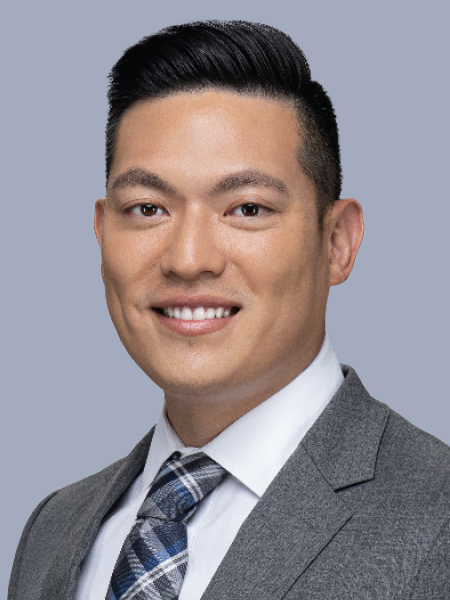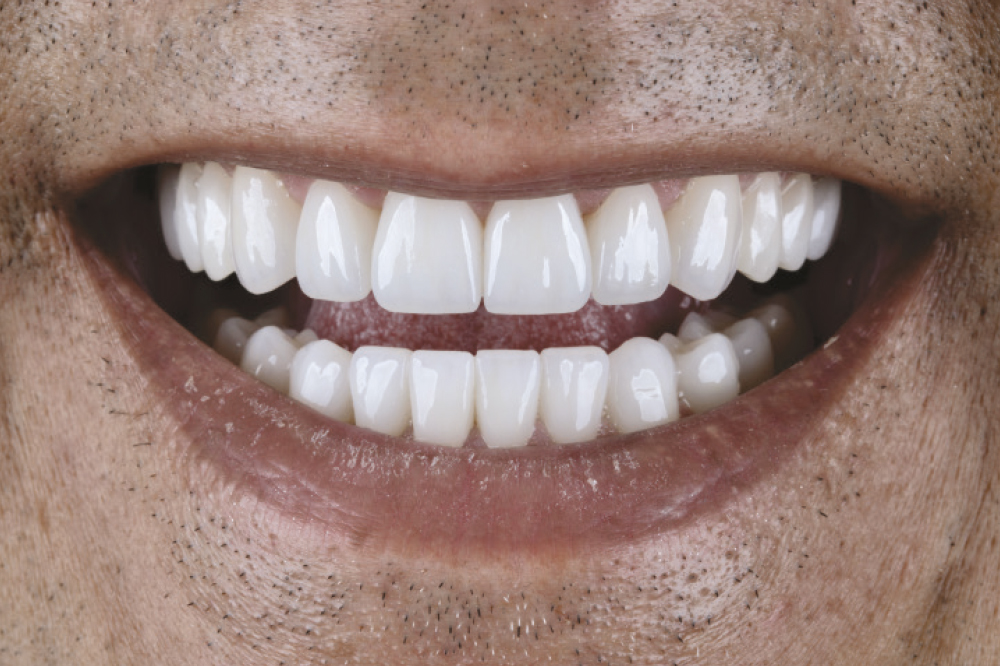Digital Dentistry is About More Than Broken Molars

“There’s no growth without change,” says Dr. Justin Chi, and when it comes to same-day dentistry, no one understands this better. As the director of clinical technologies at Glidewell, Dr. Chi has been shaping the landscape of digital dentistry from the technology’s early days.
Dr. Chi studied dental laboratory technology at Louisiana State University Health Sciences Center School of Dentistry before joining E4D Technologies — an early digital dentistry startup — as a dental technician and clinical educator. From there, he attended the Herman Ostrow School of Dentistry of USC, receiving his DDS in 2015. Dr. Chi’s background and years of training dentists in digital technology provided distinct advantages during dental school at USC. In fact, he occasionally found himself providing CAD/CAM training to faculty members.
Education remains a core part of Dr. Chi’s work today at Glidewell. He teaches multiple courses, guiding dentists through the applications of digital and same-day dentistry. Dr. Chi has also been instrumental in plotting the course for glidewell.io™ technology development through his collaborations with the Glidewell engineering, software, and materials development departments. The growth and continued transformation of digital dentistry is a story told through Dr. Chi’s own professional journey.
DR. CHI’S ROLE IN THE GROWTH OF GLIDEWELL.IO™ IN-OFFICE SOLUTIONS
Clinical cases play a fundamental role in the validation of the glidewell.io In-Office Solution’s constant evolution. Dr. Chi collaborates with Glidewell researchers and scientists, providing the clinical perspective crucial to developing products that meet the needs of dentists and enhance the patient experience.
“Understanding the specific challenges dentists encounter is so important to our development team,” Dr. Chi said. “Dental practices are growing and changing due to chairside digital technology, including intraoral scanning, artificial intelligence, chairside mills and 3D printing. We have a clinical facility on the Glidewell campus that is constantly testing new materials and processes, and being part of this process is very rewarding,” said Dr. Chi. His background in dental technology and chairside dentistry made him the ideal candidate to bridge the technological and clinical sides of Glidewell, and the timing with Dr. Chi joining Glidewell upon graduating from dental school worked out perfectly.
Having worked with CAD/CAM technology in the early 2000s, just as it was beginning to become more widely accessible, Dr. Chi knows the concerns dentists have about digital dentistry interrupting their workflow. “To get to this point, dentists have had to overcome challenges and adapt to new workflows,” he said. “And I understand why there’s resistance. Change is never easy. But change is an opportunity to greatly transform their capabilities and expand what they’re able to offer their patients.”
“The digital workflow has three key components: You’ve got the intraoral scanner, the design software and the mill. Those same three factors have been consistent for as long as I have been involved, but the way they’re managed — starting with the simplification of scanning — is remarkably better,” said Dr. Chi.
“The quality of data that we input into the CAD/CAM workflow is critical: Garbage in, garbage out. The accuracy and precision of scanning is much better today,” he continued. “In the past, we had to spend considerable time with a multitude of single-capture images. Now, the scans appear so quickly they look like a high-definition video, which makes the scanning process faster and more detailed.”
“Design software that works in conjunction with these more powerful scanners is vital,” said Dr. Chi. “At Glidewell, we developed the fastdesign.io™ Software and Design Station, which takes the intraoral scan and proposes a design rendered via artificial intelligence. The vast AI machine-learning algorithm we use pulls from the library of more than 35 million restorations we have produced since 2009. We now have the computing power and materials to produce more than molars. The software easily extends the potential of digital dentistry to be applied to more complex cases.” Most dentists mill single-unit posterior restorations as their introduction to digital dentistry. However, continued advancements open the possibility of multi-unit restorations and more esthetic cases.
“The main goal in materials development is to maximize esthetics and strength while maintaining optimal function. In this regard, Glidewell has changed the game,” said Dr. Chi. “Restorations fabricated from monolithic zirconia — a material that is strong enough for my most demanding cases — provide patients with peace of mind,” Dr. Chi said. “Fully sintered BruxZir NOW® Milling Blocks fueled the evolution of glidewell.io milling capabilities.”
BECOMING THE MENTOR OF CHAIRSIDE MILLING
With the role he plays in glidewell.io’s development, combined with his technical and clinical expertise, Dr. Chi became a mentor for dentists adopting digital solutions.
Dr. Chi is an instructor for several glidewell.io courses covering all aspects of digital chairside dentistry, from introductory level to advanced design. He also teaches specialty courses on anterior crowns, partial coverage and bridges.
“Navigating the glidewell.io system is essential to maximizing its effectiveness,” Dr. Chi said. “There is a learning curve with any new technology, and starting with the right foundation is critical. At Glidewell, we have trainers, continuing education, and a whole series of resources to help dentists with the transition,” Dr. Chi said. “We start with an initial training in their practice, then dentists come to the Glidewell campus, where we share the full menu of offerings with the system.”
WHAT’S NEXT FOR GLIDEWELL.IO IN-OFFICE SOLUTIONS
As quickly as the digital dentistry landscape changes, Dr. Chi recognizes the importance of sustained growth. “The future is for the dental office to be more self-sufficient,” he said when laying out the next steps for glidewell.io. “Whether that means taking on more complex cases or having treatment done as quickly as possible, we will do everything we can do to make that a reality.”
“There are still limitations for more complex cases, such as multiple-unit anterior restorations. When it comes to ensuring the precision of the shape, contours and shade, it can all be done, but it requires more time,” Dr. Chi said. “We are working on reducing the time commitment needed.”
Another example that Dr. Chi cites is incorporating images of the patient and their smile into the design software, and the software will digitally render the proposed smile on the patient’s image. “We’re integrating some of those workflows into the glidewell.io system,” he said. “What’s wonderful about the system is that it is connected directly to the Glidewell lab. Data improvements in the lab directly translate into software updates chairside.”
The more feedback the lab receives through clinical cases, the more intuitive the software becomes. This is one crucial way in which the lab remains a vital part of digital dentistry even as the technology allows for dentists to take on more crown fabrication in-office. In the same vein, the lab will continue to be an essential resource as mill capabilities evolve. “The lab is always going to be important to provide critical support to the dentist,” said Dr. Chi. “It will evolve into a different support structure that helps the dentist produce these high-quality treatments in-office.”
Both the variety and quality of treatments that are possible with in-office dentistry will only continue to improve. Dr. Chi’s experiences demonstrate how the technology has evolved, and his efforts with the glidewell.io team ensure that the evolution goes on.






